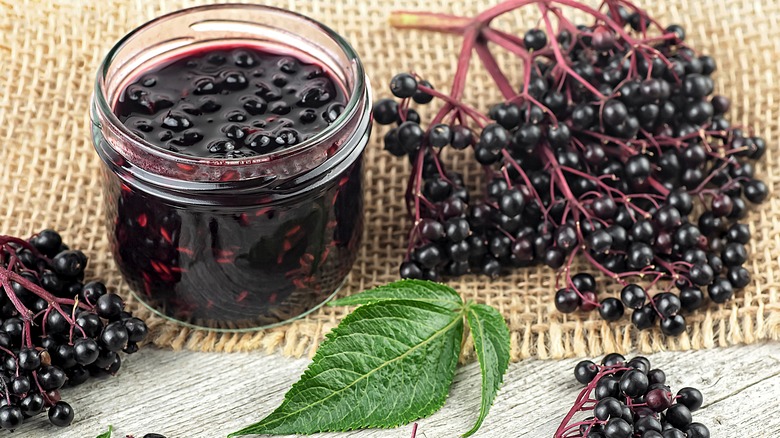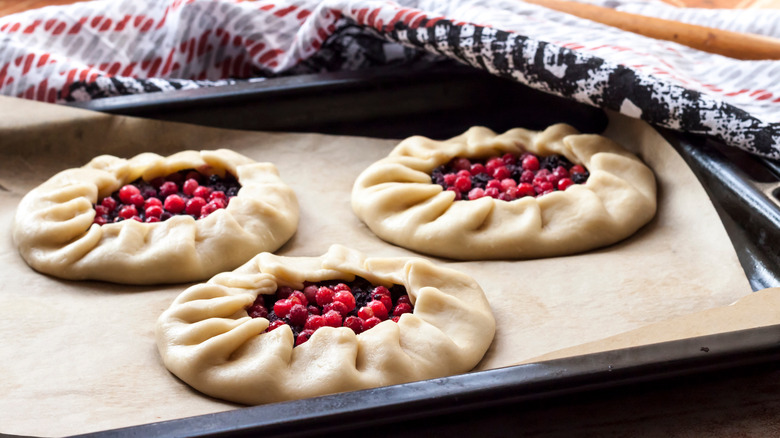How To Cook Elderberries So They're Safe To Eat
Elderberries are one of the most delicious of nature's treats and are chock-full of good stuff for the human system. Ironically, the berries are also potentially poisonous. This discrepancy may alarm some at first, but elderberries are an incredibly worthwhile ingredient to add to your arsenal of berry-powered dishes and drinks. So, how can you safely prepare elderberries to enjoy all that this piece of produce has to offer? Thankfully, the challenges that surround consuming elderberries are easily surmountable.
First, let's dive into what an elderberry actually is. The fruit of a Sambucus tree, elderberries are typically found across much of the United States, and certain varieties are native to wide swaths of Europe and the Mediterranean. Though these berries have been eaten across cultures for centuries, raw elderberries contain a toxic substance that can prove harmful to human consumption. The most important thing to note is that raw elderberries, the stalks, leaves, seeds, and bark of the trees from which they hail, contain lectins, which can cause painful and dangerous stomach issues. Small amounts of cyanide can be released when raw elderberries are eaten as well.
The fix for this is easy: Remove the potentially harmful parts of the plant before consuming (meaning the stalks and leaves) and cook the elderberries. Boiling the berries is a safe bet, but they can also be baked, stewed, and steamed. Aim for at least 30 minutes of cook time at a high temperature for the safest results.
Dishes to use elderberries in
Once you've mastered the safe preparation of elderberries, the fun begins. Now, it's time to figure out how best to use these beloved berries. One popular method is to make elderberry syrup. Simply cook the berries in water and sugar (once removed from their stems and leaves, of course), and drizzle the syrup on pancakes, into cocktails and mocktails, and more. This Tasting Table recipe offers an easy formula for delicious honey elderberry syrup to start.
You can also add elderberries to crumbles, muffins, and other baked goods. Elderberries tend to be floral and earthy in the same vein as blackberries, so experimenting with blackberry swaps — for example, in our honey blackberry pie recipe — is another good method for culinary creativity. The elderberry has long been used in cultures worldwide for its medicinal properties, so while you're incorporating a delicious ingredient safely into your late-summer and early-autumn dishes, you can also benefit from the potential immune-system-boosting and cancer-fighting properties of these delicious berries.

